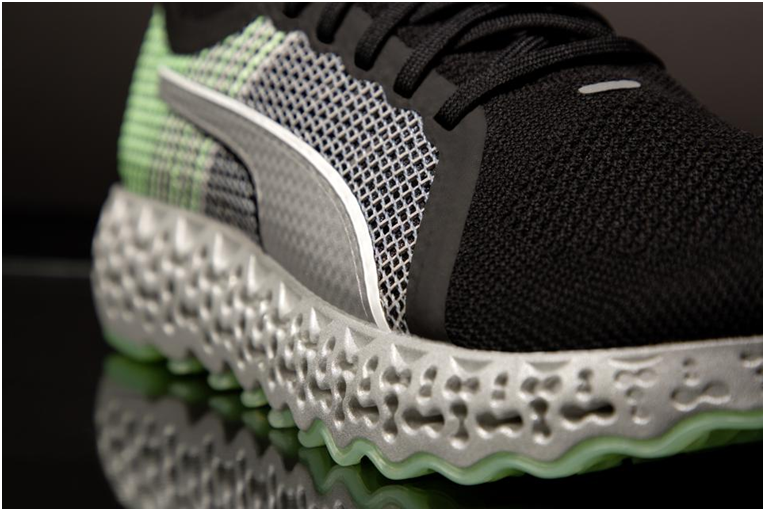
Charles R. Goulding and Preeti Sulibhavi consider next steps for Puma and how 3D printing could impact the latest style icon collaboration.
Puma is well-known for its famous collaborations. Whether it is a Rihanna Fenty labeled sneaker, or a Def Jam Clyde Court logoed shoe, Puma is not afraid to take its shoe designs to new levels.
June Ambrose has now been added to Puma’s list of famous collaborators. Known for her ability to shift culture over her 25-year fashion and design career, June Ambrose is now at the helm of one of the world’s leading brands in fashion. Ambrose is expected to apply her signature style to the Puma brand.

Ambrose can take Puma into new design territory, across multiple categories, representing emerging designs to truly grow the brand and its label. Fearless and inspired are some of the words used to describe her designs.
According to Ambrose, “I want to create a space where young men and women feel empowered on and off the court and use that to disrupt things a little bit.”
To that effect, 3D printing has been disrupting the technology sector, just as Ambrose has influenced the fashion industry. Defying the status quo and producing novel work are just some of the qualities that both Ambrose and 3D printing have been known for.
In fact, Puma has already been involved with 3D printing. Its collection of mechanical foam cushioning shoes, using MIT’s Design lab XETIC technology provides constant cushioning by pairing mechanical design with foam. While the final XETIC cushioning technology was not ultimately 3D printed, its formation was based on years of research and work with MIT based on 3D printing concepts.
Other brands leading the 3D printing charge include Nike with its Vaporfly model and the Adidas Futurecraft 4D shoe. Just like Ambrose had been revolutionizing the fashion industry, 3D printing has been disrupting the footwear industry as well. Everything from Crocs to sports gear, you name it and 3D printing has or can improve it.

Research and Development Tax Credits are available for the eligible U.S.-based, 3D printing shoe design activities that companies engage in.
The Research and Development Tax Credit
Whether it’s used for creating and testing prototypes or for final production, 3D printing is a great indicator that R&D Credit eligible activities are taking place. Companies implementing this technology at any point should consider taking advantage of R&D Tax Credits.
Enacted in 1981, the now permanent Federal Research and Development (R&D) Tax Credit allows a credit that typically ranges from 4%-7% of eligible spending for new and improved products and processes. Qualified research must meet the following four criteria:
- Must be technological in nature
- Must be a component of the taxpayer’s business
- Must represent R&D in the experimental sense and generally includes all such costs related to the development or improvement of a product or process
- Must eliminate uncertainty through a process of experimentation that considers one or more alternatives
Eligible costs include US employee wages, cost of supplies consumed in the R&D process, cost of pre-production testing, US contract research expenses, and certain costs associated with developing a patent.
On December 18, 2015, President Obama signed the PATH Act, making the R&D Tax Credit permanent. Beginning in 2016, the R&D credit has been used to offset Alternative Minimum Tax (AMT) for companies with revenue below $50MM and, startup businesses can obtain up to $250,000 per year in payroll tax cash rebates.
3D Printing: Trending Now
Not everything can be categorized as revolutionary and visionary. But with Ambrose at the helm of Puma’s design house in multiple categories, and 3D printing already a component of some of Puma’s collections, the global narrative can change and help Puma, 3D printing, and culture grow. A trend to remain part of our social fabric.
